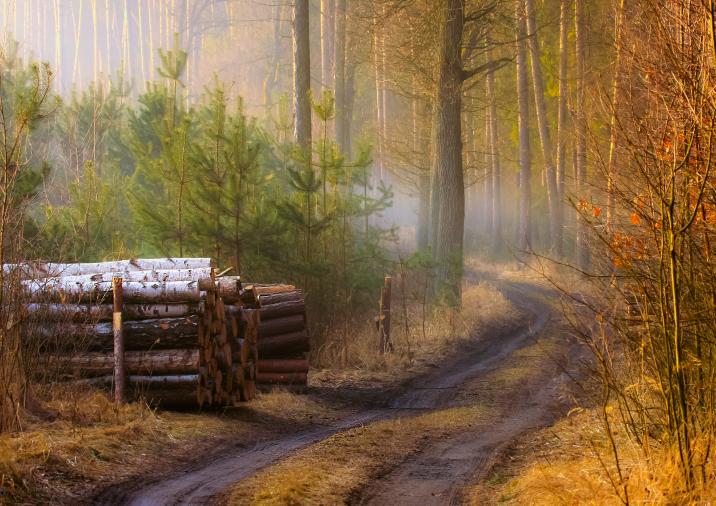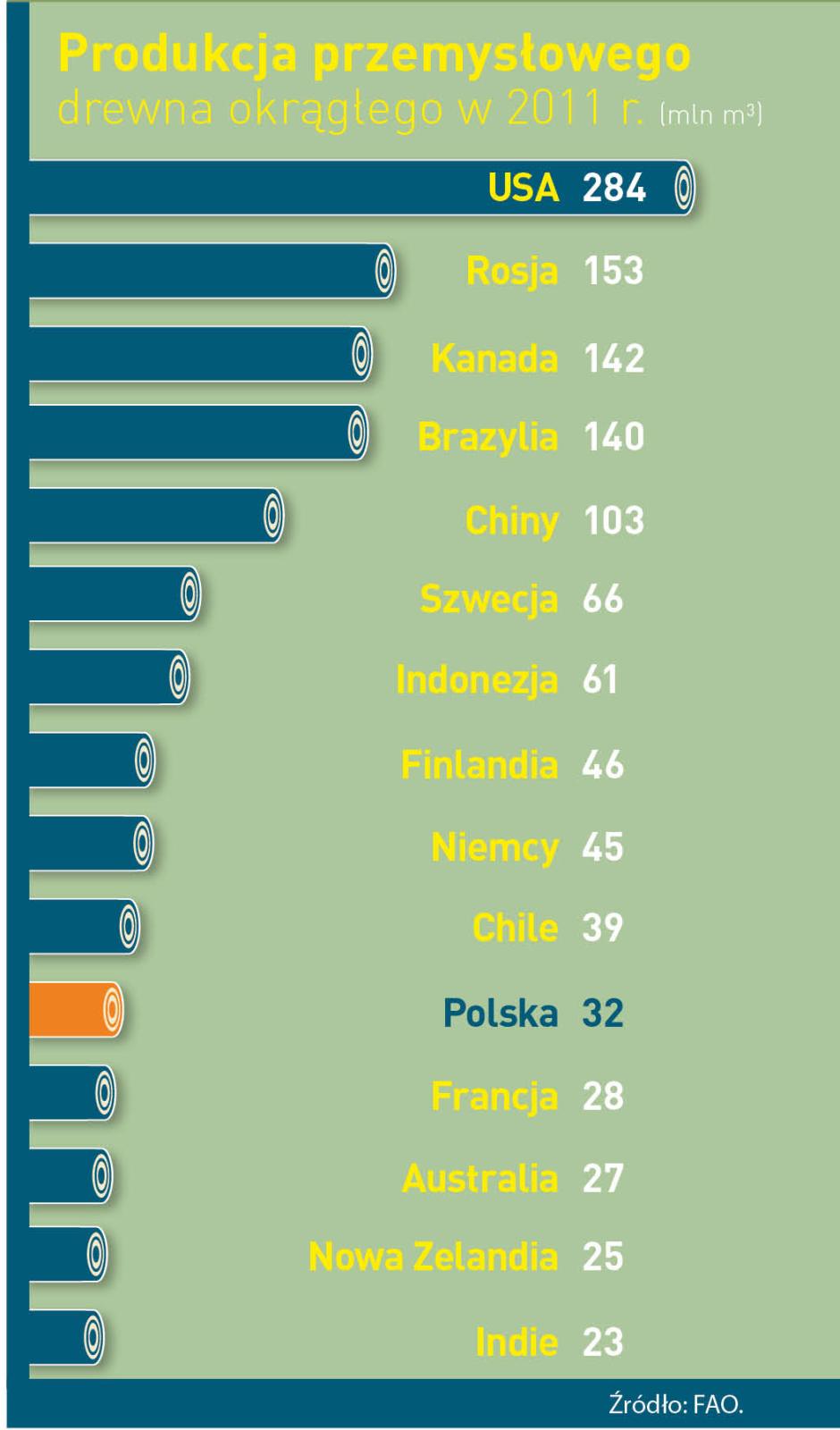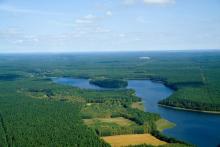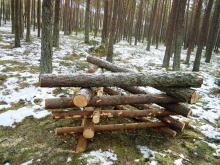Polish hit
Polish products made of wood – furniture, window and door frames, yachts or paper and packages – these are real hits of the market.
Our country is the is the 10 largest producer of furniture and the 4 largest furniture exporter in the world. Wood industry sells abroad goods of its approximate value of 45 million zl annually, what constitutes 10 % of the whole Polish export. The measurement of the essential role of forestry and timber based sector in our management is that, it works out about 2 % of GDP (Gross Domestic Product). Not only it gives work to thousands of people, but it is also an engine of investment and of development of innovative technologies. From the beginning of transformation, it drew foreign capital of its value over 30 million zl.
Forest gives work
The State Forests belong to the leading group of employers in Poland. However, both forest and timber provide for workers with several thousand of Forestry Services Companies, which within the contract of mandate deal with, among others, planting trees and their nursing, wood logging and its transportation. And above all cooperate with people employed in several dozen thousand of companies creating wood and furniture industry and paper manufacture. Summing up, it gives as many as 375 thousand of Poles altogether. Statistically, every hundred inhabitant of our country works in the sector connected with forestry and wood processing.
Among private companies of forestry and timber based sector, there are also big companies with the share of foreign capital , and big and medium sized indigenous companies, but 9 of 10 companies in this sector are small plants employing less than 10 people. These are often family companies, cultivating multigenerational traditions connected with forestry and working in less developed regions of the country. There, forestry and wood industry, as well as agriculture constitute the basis of maintaining hundred thousand of families. As many as 600 % of all working places in the forest and wood based sector are located within rural areas.
Forest and wood based sector works out about 2 % of Polish GDP (Gross Domestic Product).
- 2 % of Polish GDP works out forest and wood based sector .
- Poland takes 4 place as the largest furniture exporter and 10 place as the largest producer of furniture.
- 50 % of paper and 9 of 10 pieces of furniture produced in Poland is exported abroad
- The value of annual export of Polish goods of wood and furniture industry and paper manufacture equals 45 billion zl (it is 10 % of the whole export).
- 30 billion zl , as direct foreign investments, have been drown since 1990 by Polish wood based sector (5,5 % of all).
- 100 kg of paper is used annually by statistic Pole (an average of UE is 160 kg, for USA – 230 kg).
Source: E. Ratajczak „Potencjał gospodarczy przemysłów opartych na drewnie i perspektywy ich rozwoju (Economic performance of wood – based industries and perspectives of their development)", GUS, Warszawa 2012.
 Asset Publisher
Asset Publisher
Baśnie, las i wpólne czytanie w Chojnicach
Baśnie, las i wpólne czytanie w Chojnicach
 Fot.: A. Talaśka
Fot.: A. Talaśka
 Fot.: A. Talaśka
Fot.: A. Talaśka
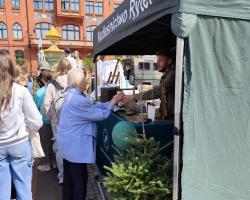 Fot.: N. Talaśka
Fot.: N. Talaśka
 Fot.: A. Talaśka
Fot.: A. Talaśka
 Fot.: A. Talaśka
Fot.: A. Talaśka
 Fot.: A. Talaśka
Fot.: A. Talaśka
W czwartek, 24 kwietnia 2025 roku, z okazji 220. rocznicy urodzin Hansa Christiana Andersena, na Starym Rynku w Chojnicach odbyło się wydarzenie promujące czytelnictwo. Zorganizowano je w ramach akcji "Dwa tygodnie z książką. Od Dnia Książki do Dnia Bibliotekarza".
Organizatorami wydarzenia były Miejska Biblioteka Publiczna w Chojnicach oraz Stowarzyszenie LekTURa, a partnerami: Chojnickie Centrum Kultury, II Liceum Ogólnokształcące im. gen. Władysława Andersa oraz Promocja Regionu Chojnickiego.
Do współorganizacji włączyło się również Nadleśnictwo Rytel, które przygotowało stoisko edukacyjne. Leśnicy rozdawali mieszkańcom Chojnic bezpłatne sadzonki drzew, a dla dzieci i młodzieży zorganizowali konkursy przyrodnicze. Tego dnia Chojnice dosłownie zazieleniły się od drzewek – rozdano niemal tysiąc sadzonek modrzewi i sosen. Nie zabrakło również rozmów o lesie, ochronie przyrody oraz działaniach gospodarczych prowadzonych przez leśników.
W związku ze zbliżającym się sezonem turystycznym promowaliśmy także walory przyrodnicze naszego nadleśnictwa i zachęcaliśmy do korzystania ze szlaków pieszych, rowerowych oraz leśnej infrastruktury turystycznej.
Wydarzeniu towarzyszyła próba bicia rekordu w jednoczesnym czytaniu książek. W tegorocznej edycji akcji udział wzięło 635 osób. Choć nie udało się pobić rekordu z 2023 roku, udowodniliśmy, że czytanie nadal łączy ludzi i może być wspaniałym sposobem na spędzanie wolnego czasu.
Las od wieków stanowił źródło natchnienia i inspiracji dla artystów. Również Hans Christian Andersen, którego wspominaliśmy tego dnia, chętnie wykorzystywał w swoich baśniach motywy przyrodnicze – lasy stawały się tłem opowieści, kryły tajemnice i budowały baśniowy nastrój. Zwierzęta i rośliny, występujące często jako bohaterowie jego utworów, w sposób alegoryczny ukazywały ludzkie cechy i emocje.
Doskonałym połączeniem obu tych światów – literatury i przyrody – byłoby czytanie książek w lesie, na łonie natury, gdzie słowa nabierają nowego wymiaru w otoczeniu szumu drzew i śpiewu ptaków.


